Why James Franco Had To Cameo And 4 More Tidbits We Learned About Dawn Of The Planet Of The Apes At WonderCon
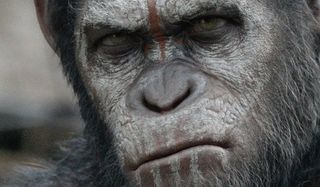
Rupert Wyatt’s Rise of the Planet of the Apes completely blew our minds back in 2011, proving that it was possible to create a truly excellent reboot/prequel for an established Hollywood franchise. The success of that film has us filled with incredible anticipation for the upcoming sequel, Dawn of the Planet of the Apes, and yesterday we got an impressive amount of insight about the movie from its panel at WonderCon.
Part of the presentation put on by 20th Century Fox, director Matt Reeves and stars Andy Serkis, Keri Russell and Gary Oldman took to the stage in the arena of the Anaheim Convention Center on Saturday, and not only presented footage from the movie, but also answered a number of questions about making the movie. I’ve picked out five of the best, most interesting anecdotes that were revealed, so read on to learn some really cool stuff!
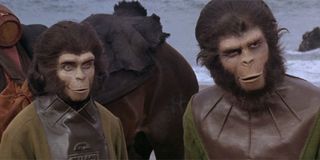
The Movie Will Fit The Continuity Of The Original Planet Of The Apes
In franchise-speak, Dawn of the Planet of the Apes is unique. How many other movies can you name that can be described as being a sequel to a reboot that is also kind of a spin-off? All the same, we still know that what lies ahead eventually is another remake of Planet of the Apes - but what you may not know is that this new series is actually very much doing its part to fit into the continuity of the 1968 original and the sequels that followed. Rupert Wyatt’s Rise of the Planet of the Apes completely blew our minds back in 2011, proving that it was possible to create a truly excellent reboot/prequel for an established Hollywood franchise. The success of that film has us filled with incredible anticipation for the upcoming sequel, Dawn of the Planet of the Apes, and yesterday we got an impressive amount of insight about the movie from its panel at WonderCon.
Asked by a fan if Dawn of the Planet of the Apes will include some variation of the famous "Get your hands off me, you damn dirty apes" line, Reeves said no, but instead said that the entire film itself is an homage to the Charlton Heston-led first film and that the trajectory is definitely headed in that direction. In fact, in the movie we will see the establishment of certain canon elements, such as the rule about apes not killing apes. Basically, if you really want to get the most out of the new film you might want to break out your Blu-rays/DVD copies of the original.
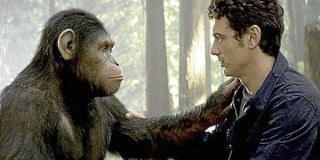
Why James Franco Had To Be In The Movie
Andy Serkis’ Caesar was certainly the main character in Rise of the Planet of the Apes, but one can’t discount the importance of James Franco’s Will Rodman. Not only was he the scientist working on the experiments that would eventually give apes intelligence, he played a key role in Caesar’s development. He was such an important character, in fact, that even though Will died at some point in the timeline between Rise and Dawn he still needed to be included in the upcoming sequel.
CINEMABLEND NEWSLETTER
Your Daily Blend of Entertainment News
While he wouldn’t explicitly say how Will would be showing up in the movie, Reeves did confirm that the scientist makes an appearance that is very important for Caesar’s character. The director explained that Caesar is very much on both sides of the central conflict in the sequel, being an ape who was raised by humans, and Franco’s cameo serves to reconnect the protagonist with that side of himself and what he’s lost. Hopefully the details of the role will be kept a secret until the movie actually arrives in theaters.

There Are No Villains
A big part of what makes the rebooted Planet of the Apes franchise so interesting is that we know exactly where it’s headed: the humans lose and the apes win. To a certain extent this makes it kind of difficult to pick a side to root for, given that the audience naturally relates to the human characters but also doesn’t want to waste time cheering for the losing side. So who exactly are the heroes and who are the villains in Dawn of the Planet of the Apes? The answer is that there really aren’t any.
"There are no easy answers here," Reeves said in describing the antagonist divide. "You have to root for both sides to make it work." In the film, while some characters will act in potentially scary and intimidating ways, they will all be backed by understandable motivations. Even Dreyfus, Gary Oldman’s character, who is radically anti-ape voice in the human community is understandable in his mentality and actions given that he has lost everything in the time since the outbreak of the virus and the apes’ rise to dominance. Oldman even went as far as to describe him as a "heroic character."
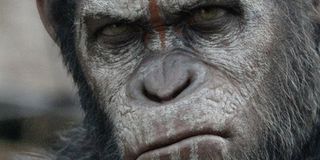
Making Caesar More Human, But Not Overly Human
Andy Serkis has proven himself to be the greatest performance capture actor in the world, not only breathing life into Planet of the Apes’ Caesar but also memorably playing Gollum in the Lord of the Rings trilogy (and the first Hobbit) as well as the titular giant gorilla in Peter Jackson’s King Kong. The upcoming sequel provided him with an interesting challenge, however, given that it was the first time he had to take his character through a full evolution.
In the 10 years since the events of Rise of the Planet of the Apes in the movie timeline, Caesar has only grown more intelligent and advanced, which is something that Serkis had to implement into his Dawn of the Planet of the Apes performance. In addition to developing the way that Caesar communicates – through gestures, vocalization and sign language – Serkis also evolved the way that the character holds himself. "It’s philosophical later in the movie," Serkis described. "But you have to make sure it’s not overly human."
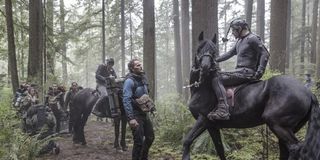
Performance Capture In Practical Environments
Watching footage from Dawn of the Planet of the Apes it’s very clear that the movie is going to feature some absolutely revolutionary visual effects – and those effects were not required by ordinary means. Like they did with Rise, all of the apes performances are done using motion capture, but there was one extra twist added this time. Rather than filming in a controlled environment like a soundstage or studio, 85% to 95% of the movie was shot using practical locations.
While this kind of thing is rather revolutionary, Reeves said that it was probably never done before because "it’s absurd" and extremely difficult to do. That said, the director does believe that it, along with the movie’s 3D, make for an experience that is both "very immersive and realistic." How will it turn out on the big screen? We’ll have to wait until July 11th to find out.

Eric Eisenberg is the Assistant Managing Editor at CinemaBlend. After graduating Boston University and earning a bachelor’s degree in journalism, he took a part-time job as a staff writer for CinemaBlend, and after six months was offered the opportunity to move to Los Angeles and take on a newly created West Coast Editor position. Over a decade later, he's continuing to advance his interests and expertise. In addition to conducting filmmaker interviews and contributing to the news and feature content of the site, Eric also oversees the Movie Reviews section, writes the the weekend box office report (published Sundays), and is the site's resident Stephen King expert. He has two King-related columns.
Most Popular






